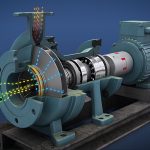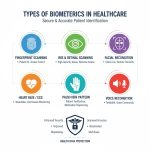The global laparoscopy devices market stands at the forefront of modern surgical innovation, representing a transformative shift toward minimally invasive medical procedures that prioritize patient comfort, surgical precision, and healthcare efficiency. As healthcare systems worldwide increasingly embrace advanced surgical technologies, the laparoscopy devices market has emerged as a critical component in delivering superior patient outcomes while reducing healthcare costs and recovery times.
Laparoscopic surgery, also known as minimally invasive surgery, utilizes specialized instruments and fiber-optic cameras to perform complex procedures through small incisions rather than traditional open surgery approaches. This revolutionary technique has fundamentally changed surgical practices across multiple medical specialties, from general surgery and gynecology to urology and oncology, creating unprecedented demand for sophisticated laparoscopic devices and equipment.
- Market Size Growth: According to analysts at Vantage Market Research, Global laparoscopic devices market valued between $8.3 billion in 2024, with projections reaching $18.43 billion by 2025-2035.
- Growth Rate: Market expanding at CAGR of 7.55% depending on forecast period 2025-2035.
- Primary Driver: Increasing preference for minimally invasive surgeries due to benefits like shorter recovery times, reduced pain, and lower complications.
- Technology Integration: Growing adoption of AI-assisted robotic procedures and advanced imaging systems.
Market Overview and Growth Projections
The Laparoscopy Devices Market encompasses a comprehensive range of surgical instruments designed to facilitate minimally invasive procedures, including laparoscopes, trocars, insufflators, energy systems, suction devices, and robotic-assisted platforms. These devices have revolutionized surgical practices by offering healthcare providers advanced tools that enable precise surgical interventions while minimizing patient trauma and accelerating recovery processes.
The market’s expansion is fundamentally driven by the increasing preference for minimally invasive surgical approaches across healthcare institutions globally. Patients and healthcare providers alike recognize the substantial benefits of laparoscopic procedures, including reduced postoperative pain, shorter hospital stays, minimal scarring, faster recovery times, and lower risk of surgical complications compared to traditional open surgical methods.
Download Sample Report (Get Full Insights In PDF- 191+ Pages) at: https://www.vantagemarketresearch.com/laparoscopy-devices-market-1583/request-sample
Market Size and Forecast Insights
The global laparoscopy devices market achieved a valuation of USD 8.3 billion in 2024, reflecting steady growth and increasing adoption of minimally invasive surgical technologies across healthcare systems worldwide. This market size represents the cumulative value of all laparoscopic devices, including diagnostic and therapeutic instruments used in laparoscopic procedures across various medical specialties.
Market projections indicate that the laparoscopy devices market will reach USD 18.43 billion by 2035, representing more than a doubling of market value over the forecast period. This substantial growth projection reflects the continued expansion of minimally invasive surgical adoption, technological advancement integration, and increasing patient demand for less invasive surgical options.
The laparoscopy devices market is projected to grow at a compound annual growth rate of 7.55% between 2025 and 2035, indicating consistent and sustainable market expansion. This growth rate reflects the balanced interplay between increasing market adoption, technological innovation, and the gradual maturation of certain market segments as laparoscopic procedures become standard practice across many surgical specialties.
Read Full Research Report with TOC: https://www.vantagemarketresearch.com/industry-report/laparoscopy-devices-market-1583
Key Market Trends & Insights
The laparoscopy devices market demonstrates several compelling trends that underscore its robust growth trajectory and evolving technological landscape. The integration of artificial intelligence and robotic assistance into laparoscopic procedures represents a significant advancement, with AI-assisted robotic procedures reducing surgical errors, facilitating faster recovery timelines, and improving overall patient outcomes.
Technological innovation continues to reshape the market landscape, with manufacturers developing enhanced imaging systems, more precise surgical instruments, and sophisticated energy delivery platforms that improve surgical precision and patient safety. The growing emphasis on value-based healthcare has further accelerated adoption, as laparoscopic procedures align with healthcare providers’ objectives to deliver cost-effective, high-quality patient care.
The increasing prevalence of chronic diseases requiring surgical intervention, including obesity, gastrointestinal disorders, colorectal cancer, and gallbladder disease, continues to drive substantial demand for laparoscopic surgical solutions. Recent data indicates that colorectal cancer cases alone number over 107,320 new colon cancer cases and 46,950 new rectal cancer cases annually in the United States, creating significant demand for laparoscopic colorectal procedures.
Market Concentration & Characteristics
- Market Structure: Moderate to high concentration with several key players dominating the market.
- Innovation Focus: Established manufacturers lead in innovation, quality, and market share while new entrants focus on niche products.
- Regulatory Impact: Stringent regulatory requirements from FDA and EMA increase development costs but foster consumer trust.
- Technology Advancement: Continuous innovation driven by demand for minimally invasive surgeries.
The laparoscopy devices market exhibits moderate concentration with several key players commanding significant market shares while maintaining competitive dynamics that drive innovation and technological advancement. Major market participants include established medical device manufacturers with extensive product portfolios and emerging companies focused on specialized laparoscopic technologies.
Market characteristics include high barriers to entry due to substantial research and development requirements, stringent regulatory approval processes, and the need for extensive clinical validation of new devices. However, the market also presents significant opportunities for innovation, particularly in areas such as robotic-assisted surgery, artificial intelligence integration, and enhanced imaging technologies.
The market demonstrates geographic concentration in developed healthcare markets, particularly North America and Europe, while experiencing rapid expansion in emerging markets across Asia Pacific and Latin America. This geographic distribution reflects varying healthcare infrastructure development, regulatory environments, and healthcare spending patterns across different regions.
Product Insights
- Leading Segment: Laparoscopes dominated with 38.7% market share in 2023 due to increasing demand for minimally invasive surgeries.
- Energy Systems Growth: Energy systems segment held 21.55% revenue share in 2021 and showing strong expansion.
- Technology Enhancement: High-definition and 3D visualization systems improving surgical accuracy and precision.
- Product Categories: Market includes laparoscopes, energy systems, insufflators, trocars, and robotic-assisted platforms.
The laparoscopy devices market encompasses diverse product categories, each serving specific functions within minimally invasive surgical procedures. Laparoscopes represent the core visualization component, utilizing fiber-optic technology to provide surgeons with high-definition internal organ visualization through minimal incisions. Modern laparoscopes incorporate advanced imaging capabilities, including 4K resolution, enhanced light transmission, and specialized viewing angles that improve surgical precision.
Trocars and cannulas serve as essential access devices that enable surgical instrument insertion into the peritoneal cavity while maintaining pneumoperitoneum necessary for optimal surgical visualization. These devices have evolved to include safety features that reduce the risk of organ injury during insertion, ergonomic designs that improve surgeon comfort, and various size options to accommodate different surgical requirements.
Insufflators represent critical support equipment that introduces carbon dioxide into the abdominal cavity, creating the pneumoperitoneum necessary for safe laparoscopic surgery. Modern insufflators feature precise pressure control, flow rate monitoring, and safety systems that prevent over-insufflation and ensure patient safety throughout surgical procedures.
Energy systems constitute a rapidly growing product segment, with the laparoscopic energy systems market projected to reach USD 6,780.29 million by 2031 from USD 3,473.40 million in 2024, representing a CAGR of 10.0%. These systems include electrosurgical devices, ultrasonic systems, and advanced energy platforms that enable precise tissue cutting, coagulation, and sealing during laparoscopic procedures.
Robotic-assisted systems represent the most technologically advanced product category, with the laparoscopic robot-assisted systems market expected to reach USD 5,002.32 million by 2031 from USD 2,387.52 million in 2024, registering a CAGR of 11.1%. These systems provide surgeons with enhanced dexterity, tremor elimination, and improved visualization capabilities that enable complex procedures to be performed with unprecedented precision.
Application Insights
- General Surgery Lead: General surgery applications held significant 34.1% market share in 2023.
- Growing Applications: Bariatric surgery segment expected to witness highest CAGR of 7.77% during forecast period.
- Diverse Specialties: Market covers colorectal surgery, gynecological surgery, urological surgery, and others.
- Procedure Volume: Over 13 million laparoscopic procedures performed annually in the US alone.
Laparoscopic devices find extensive application across multiple surgical specialties, with general surgery representing the largest application segment. General surgical procedures including cholecystectomy, appendectomy, and hernia repair have widely adopted laparoscopic approaches due to proven clinical benefits and surgeon familiarity with these techniques.
Gynecological applications constitute another significant market segment, with laparoscopic devices used extensively for hysterectomy, myomectomy, and treatment of conditions such as endometriosis and uterine fibroids. The increasing number of women seeking minimally invasive treatment options for gynecological conditions continues to drive demand in this application area.
Colorectal surgery applications are experiencing rapid growth, driven by increasing colorectal cancer incidence and the proven benefits of laparoscopic colorectal procedures. Recent data from Frimley Health NHS Foundation Trust revealed that 74% of colorectal cancer procedures were laparoscopic interventions, significantly exceeding their target of 64%.
Bariatric surgery applications represent a high-growth segment, driven by the global obesity epidemic and increasing adoption of laparoscopic weight-loss procedures. With estimates indicating that 167.0 million people will experience worsened health from being overweight or obese by 2025, demand for laparoscopic bariatric surgery continues to expand.
Urological applications are gaining prominence as urologists increasingly adopt laparoscopic techniques for procedures including prostatectomy, nephrectomy, and pyeloplasty. The precision and reduced invasiveness of laparoscopic approaches align well with the delicate nature of urological procedures.
End-use Insights
- Hospital Dominance: Hospitals sector holds largest revenue share of 59.4%-61.7% in the laparoscopic devices market.
- ASC Growth: Ambulatory surgical centers segment expected to witness highest CAGR of 7.15% during forecast period.
- Healthcare Infrastructure: Growing investments in advanced surgical equipment supporting market expansion.
Hospitals represent the dominant end-use segment for laparoscopic devices, accounting for the majority of market demand due to their role as primary centers for surgical procedures and their capacity to invest in advanced surgical technologies. Large hospital systems and academic medical centers often serve as early adopters of innovative laparoscopic technologies, driving market expansion and technology validation.
Ambulatory surgical centers constitute a rapidly growing end-use segment, driven by the cost-effectiveness of laparoscopic procedures and the trend toward outpatient surgical care. These facilities benefit from the shorter procedure times and reduced recovery requirements associated with laparoscopic surgery, enabling higher patient throughput and improved operational efficiency.
Specialty clinics focused on specific surgical specialties, such as gynecology, urology, and bariatric surgery, represent an important end-use segment that drives demand for specialized laparoscopic devices tailored to specific procedural requirements.
Regional Insights
- North America Leadership: North America dominated with 34%-39.7% market share in 2024, driven by advanced healthcare infrastructure.
- US Market Size: US laparoscopic devices market valued at $2.26-$2.43 billion in 2023-2024.
- Asia Pacific Growth: Expected to expand at solid CAGR of 8.02% with South Korea and Singapore leading.
- Europe Development: Significant growth expected due to increasing disease prevalence and government support.
U.S. Laparoscopic Devices Market Trends
The United States maintains its position as the largest single market for laparoscopic devices, driven by advanced healthcare infrastructure, high healthcare spending, favorable reimbursement policies, and widespread adoption of minimally invasive surgical techniques. North America dominated the global laparoscopic devices market with a 34.3% share in 2024, attributable to increasing incidence of colorectal cancer, Crohn’s disease, technological advancements, and the presence of key market players in the region.
American healthcare institutions continue to invest heavily in advanced laparoscopic technologies, including robotic-assisted systems and AI-enhanced surgical platforms. The regulatory environment in the United States, overseen by the FDA, provides a clear pathway for device approval while maintaining high safety standards that support market confidence.
Europe Laparoscopic Devices Market Trends
The European laparoscopic devices market demonstrates strong growth driven by aging populations, increasing healthcare expenditure, and supportive healthcare policies that favor minimally invasive surgical approaches. Countries such as Germany, France, and the United Kingdom lead European market adoption, with well-established healthcare systems that facilitate technology integration.
European regulatory frameworks, particularly the Medical Device Regulation (MDR), ensure high safety and efficacy standards while supporting innovation in laparoscopic device development. The region’s emphasis on value-based healthcare aligns well with the cost-effectiveness benefits of laparoscopic procedures.
Asia Pacific Laparoscopic Devices Market Trends
The Asia Pacific region represents the fastest-growing market for laparoscopic devices, with India identified as the top-performing market with a projected CAGR of 6.2%. Rapid economic development, expanding healthcare infrastructure, increasing healthcare spending, and growing awareness of minimally invasive surgical benefits drive robust market expansion across the region.
Countries such as China, Japan, and South Korea are investing significantly in healthcare modernization, creating substantial opportunities for laparoscopic device manufacturers. The large population base and increasing prevalence of chronic diseases requiring surgical intervention further support market growth in this region.
Latin America Laparoscopic Devices Trends
Latin American markets, led by Brazil and Argentina, are experiencing steady growth in laparoscopic device adoption, driven by improving healthcare infrastructure, increasing medical tourism, and growing physician training in minimally invasive surgical techniques. Government initiatives to modernize healthcare systems and expand access to advanced medical technologies support market development in this region.
Key Laparoscopic Devices Company Insights
- Major Players: Medtronic PLC, Karl Storz GmbH, Stryker Corp., Intuitive Surgical, Johnson & Johnson Services Inc., CONMED Corp., and Olympus Corp.
- Market Innovation: Companies focusing on technological advancements and R&D investments.
- Strategic Focus: Major manufacturers introducing technologically advanced surgical instruments including powered surgical devices.
Key Laparoscopic Devices Companies:
The laparoscopic devices market features several dominant players that drive innovation and market development. Medtronic PLC stands as a market leader, offering comprehensive laparoscopic device portfolios including energy systems, trocars, and robotic-assisted platforms. The company’s extensive research and development capabilities and global distribution network position it as a key market influencer.
Karl Storz GmbH represents a pioneer in endoscopic technology, providing high-quality laparoscopes and visualization systems that set industry standards for surgical imaging. The company’s focus on optical excellence and technological innovation maintains its competitive position in the premium device segment.
Stryker Corporation leverages its broad surgical device expertise to offer integrated laparoscopic solutions, including instruments, energy systems, and surgical navigation technologies. The company’s acquisition strategy and innovation focus drive continued market expansion.
Intuitive Surgical dominates the robotic-assisted laparoscopic surgery segment with its da Vinci surgical systems, which have become the gold standard for robotic minimally invasive procedures. The company’s technological leadership and extensive installed base create significant competitive advantages.
Johnson & Johnson Services, Inc. through its Ethicon division, provides comprehensive laparoscopic device solutions including energy systems, trocars, and surgical instruments. The company’s global reach and diverse product portfolio support its strong market position.
Recent Developments
- System Adoption: UC Davis Health adopted ConMed’s AirSeal System in November 2022, becoming first multi-site health system to implement low-pressure insufflation.
- Technology Integration: Growing integration of robotic-assisted systems and AI technologies.
- Product Innovation: Development of battery-powered and electric-powered surgical instruments gaining popularity.
Recent market developments highlight the dynamic nature of the laparoscopic devices industry and its continued evolution toward more advanced, precise, and user-friendly surgical solutions. The integration of artificial intelligence into laparoscopic surgery represents a significant technological advancement, with AI-assisted systems improving surgical precision, reducing procedure times, and enhancing patient outcomes.
Robotic-assisted laparoscopic surgery continues to gain adoption, with new system launches and expanded indications driving market growth. The development of single-port robotic systems and enhanced haptic feedback capabilities represents important technological progress in this segment.
Energy system innovations, including advanced ultrasonic and radiofrequency devices with improved tissue interaction profiles, continue to enhance surgical capabilities while reducing thermal spread and tissue damage. These developments support the market’s evolution toward more precise and safer surgical interventions.
Global Laparoscopic Instruments Market Dynamics
- Key Drivers: Rising volume of minimally invasive surgeries, technological advancements, growing chronic disease prevalence.
- Market Opportunities: Customization and patient-centric healthcare approaches, market penetration in emerging economies.
- Growth Factors: Training programs, robotic system integration, and energy-based device development.
Driver:
The increasing volume of minimally invasive surgeries represents the primary driver of laparoscopic devices market growth. Healthcare providers and patients increasingly recognize the substantial benefits of laparoscopic procedures, including reduced postoperative pain, shorter hospital stays, faster recovery times, and lower complication rates compared to traditional open surgery. This trend is supported by extensive clinical evidence demonstrating superior patient outcomes and cost-effectiveness of minimally invasive approaches.
The growing prevalence of chronic diseases requiring surgical intervention, including obesity, gastrointestinal disorders, and cancer, continues to drive procedure volumes and demand for laparoscopic devices. Additionally, expanding surgical indications for laparoscopic approaches and improved surgeon training programs contribute to increasing adoption rates across multiple surgical specialties.
Restraint:
High capital investment requirements for advanced laparoscopic equipment represent a significant market restraint, particularly for smaller healthcare facilities and those in emerging markets. Robotic-assisted systems, high-definition imaging equipment, and sophisticated energy systems require substantial upfront investments that may limit adoption rates in cost-sensitive healthcare environments.
Operational costs, including device maintenance, training requirements, and disposable instrument expenses, create ongoing financial considerations that influence purchasing decisions. The need for specialized technical support and regular equipment updates adds to the total cost of ownership for laparoscopic device systems.
Opportunity:
Emerging markets present substantial growth opportunities for laparoscopic device manufacturers as healthcare infrastructure development accelerates and healthcare spending increases. Countries across Asia Pacific, Latin America, and parts of Africa are investing significantly in healthcare modernization, creating demand for advanced surgical technologies.
Rising disposable incomes, expanding insurance coverage, and growing awareness of minimally invasive surgical benefits in emerging markets create favorable conditions for market expansion. Government initiatives to improve healthcare access and quality further support adoption of advanced laparoscopic technologies in these regions.
Challenges:
Complex regulatory environments across different markets create challenges for laparoscopic device manufacturers seeking global market access. Varying approval requirements, clinical trial expectations, and post-market surveillance obligations require significant resources and expertise to navigate successfully.
The evolving regulatory landscape, including updates to medical device regulations in major markets, requires continuous compliance efforts and may impact product development timelines and costs. Ensuring global regulatory compliance while maintaining innovation pace represents an ongoing challenge for market participants.
Laparoscopic Devices Market Report Scope
- Geographic Coverage: Comprehensive analysis across North America, Europe, Asia Pacific, Latin America, and Middle East & Africa.
- Time Horizon: Historical data from 2018-2024 with forecasts extending to 2025-2035.
- Market Segments: Complete coverage of product types, applications, and end-user categories.
The laparoscopic devices market analysis encompasses all devices and instruments used in minimally invasive surgical procedures across multiple medical specialties. The market scope includes diagnostic and therapeutic laparoscopic equipment, ranging from basic visualization instruments to advanced robotic-assisted surgical systems.
Geographic coverage spans all major global markets, including North America, Europe, Asia Pacific, Latin America, and the Middle East and Africa. The analysis considers both developed and emerging markets, examining factors influencing adoption rates, growth patterns, and competitive dynamics in each region.
The temporal scope covers historical market performance, current market conditions, and future projections through 2035, providing comprehensive insight into market evolution and growth trajectories. Product segmentation includes all major device categories, while application analysis covers key surgical specialties utilizing laparoscopic approaches.
Global Laparoscopic Devices Market Report Segmentation
- By Product: Laparoscopes, energy systems, insufflators, trocars, internal closure devices, and others.
- By Application: General surgery, bariatric surgery, colorectal surgery, gynecological surgery, urological surgery.
- By End-User: Hospitals, clinics, ambulatory surgical centers.
- By Region: North America, Europe, Asia Pacific, Latin America, Middle East & Africa with country-level analysis.
Market segmentation analysis provides detailed insight into specific product categories, applications, and regional markets that drive overall market growth. Product segmentation includes laparoscopes, energy systems, insufflators, trocars and cannulas, suction and irrigation systems, robotic systems, and accessories. Each segment demonstrates distinct growth patterns and competitive dynamics.
Application segmentation covers general surgery, gynecology, urology, colorectal surgery, bariatric surgery, and other specialized surgical areas. This segmentation reveals varying adoption rates and growth potential across different surgical specialties.
End-use segmentation encompasses hospitals, ambulatory surgical centers, specialty clinics, and other healthcare facilities, highlighting the diverse customer base for laparoscopic devices and varying purchasing patterns across different healthcare settings.
Regional segmentation provides detailed analysis of market conditions, growth drivers, and competitive landscapes across North America, Europe, Asia Pacific, Latin America, and the Middle East and Africa, enabling targeted market strategies and investment decisions.
Market Segmentation
Parameter
Details
Segment Covered
By Product
- Laparoscopes
- Energy Systems
- Trocars
- Closure Devices
- Suction/ Irrigation Device Insufflation Device
- Robot Assisted Systems
- Hand Access Instruments
By Application
- Bariatric Surgery
- Urological Surgery
- Gynecological Surgery
- General Surgery
- Colorectal Surgery
- Other Surgeries
By End User
- Hospital (62.5%)
- Clinic (19.5%)
- Ambulatory (18.0%)
By Region
- North America (U.S., Canada, Mexico)
- Europe (Germany, France, U.K., Italy, Spain, Nordic Countries, Benelux Union, Rest of Europe)
- Asia Pacific (China, Japan, India, New Zealand, Australia, South Korea, South-East Asia, Rest of Asia Pacific)
- Latin America (Brazil, Argentina, Rest of Latin America)
- Middle East & Africa
Companies Covered
- Medtronic
- Stryker Corporation
- Karl Storz SE & CO. Kg
- Johnson and Johnson
- Olympus Corporation
- Conmed Corporation
- B. Braun Melsungen AG
- The Cooper Companies Inc.
- Richard Wolf GmbH
- Microline Surgical
- BD Welfare Medical Ltd.
- Deam
- Intuitive Surgical
- Shenzen Mindray Bio Medical Electronics Co. Ltd.
Customization Scope
Enjoy complimentary report customization—equivalent to up to 8 analyst working days—with your purchase. Customizations may include additions or modifications to country, regional, or segment-level data.
Pricing and purchase options
Access flexible purchase options tailored to your specific research requirements. Explore purchase options
Frequently Asked Questions
What are the current trends and future growth projections for the global laparoscopy devices market?
The global laparoscopy devices market is experiencing robust growth, valued at USD 8.3 billion in 2024 and projected to reach USD 18.43 billion by 2035, representing a CAGR of 7.55%. Current trends include increasing integration of artificial intelligence and robotic assistance, growing preference for minimally invasive procedures, and expanding applications across surgical specialties. The market benefits from technological advancements in imaging systems, energy platforms, and surgical instruments that enhance precision and patient outcomes.
Which companies are leading the laparoscopy devices market, and what are their market shares or latest developments?
Leading companies in the laparoscopy devices market include Medtronic PLC, Karl Storz GmbH, Stryker Corporation, Intuitive Surgical, Johnson & Johnson Services Inc., CONMED Corp., and Olympus Corp.. These companies drive innovation through advanced product development, strategic acquisitions, and expansion into emerging markets. Recent developments focus on AI integration, robotic system enhancements, and energy system improvements that provide superior surgical capabilities.
What are the key factors driving the growth of the laparoscopy devices market worldwide?
Key growth drivers include the increasing volume of minimally invasive surgeries, rising prevalence of chronic diseases requiring surgical intervention, technological advancements in surgical instruments and imaging systems, growing patient awareness of minimally invasive benefits, and expanding healthcare infrastructure in emerging markets. The proven clinical benefits of laparoscopic procedures, including reduced recovery times and lower complication rates, continue to drive adoption across healthcare systems globally.
How is the market for laparoscopy devices segmented by region, and which regions are experiencing the fastest growth?
North America dominates the market with a 34.3% share, driven by advanced healthcare infrastructure and high technology adoption rates. Asia Pacific represents the fastest-growing region, with India leading at a CAGR of 6.2%. Europe maintains strong growth through supportive healthcare policies and aging populations. Latin America and the Middle East and Africa show steady expansion driven by healthcare infrastructure development and increasing medical tourism.
What are the main challenges or restraints currently affecting the laparoscopy devices market?
Primary challenges include high capital investment requirements for advanced equipment, complex regulatory environments across different markets, the need for specialized surgeon training, and ongoing operational costs including maintenance and disposable instruments. Market saturation in certain developed regions and potential economic uncertainties affecting healthcare spending also present challenges to sustained growth rates.
How is technological innovation, such as robotics or AI, impacting the laparoscopy devices market?
Technological innovation significantly impacts market growth, with AI-assisted robotic procedures reducing surgical errors, improving patient outcomes, and enabling complex procedures with enhanced precision. The robotic-assisted laparoscopic systems market is projected to reach USD 5,002.32 million by 2031, growing at 11.1% CAGR. Advanced imaging systems, energy platforms, and navigation technologies continue to enhance surgical capabilities and expand procedural applications.
What is the size and expected CAGR (Compound Annual Growth Rate) of the laparoscopy devices market over the next 5 to 10 years?
The laparoscopy devices market is valued at USD 8.3 billion in 2024 and projected to grow at a CAGR of 7.55% through 2035, reaching USD 18.43 billion. This growth rate reflects sustained demand for minimally invasive surgical solutions, technological advancement integration, and expanding global healthcare access. Different market segments show varying growth rates, with robotic systems and energy devices demonstrating particularly strong expansion.
Which types of laparoscopy devices (such as energy devices, insufflators, or surgical robots) are most in demand currently and why?
Energy systems represent the highest growth segment, projected to reach USD 6,780.29 million by 2031 with a 10.0% CAGR. Robotic-assisted systems show strong demand with 11.1% CAGR growth. These devices are in high demand due to their ability to enhance surgical precision, improve patient outcomes, and enable complex procedures that were previously challenging with traditional laparoscopic approaches. Advanced visualization systems and specialized instruments also demonstrate strong demand.
How do regulatory factors and reimbursement policies influence the adoption of laparoscopic devices in key markets?
Regulatory frameworks significantly influence market adoption, with established approval pathways in developed markets facilitating technology integration while maintaining safety standards. Favorable reimbursement policies for minimally invasive procedures encourage adoption by making these technologies financially viable for healthcare providers. Varying regulatory requirements across markets create challenges for global manufacturers but also ensure device safety and efficacy standards.
What are the major opportunities for new entrants or investors in the laparoscopy devices market?
Major opportunities include expansion into emerging markets with growing healthcare infrastructure, development of specialized devices for niche surgical applications, integration of AI and digital technologies, creation of cost-effective solutions for resource-limited settings, and innovation in disposable instrument technologies. The growing emphasis on value-based healthcare creates opportunities for devices that demonstrate clear clinical and economic benefits while improving patient outcomes.
![[Market Research Reports] – Research Google News Blog | VMR.Biz](https://www.vmr.biz/wp-content/uploads/2022/12/logo-removebg-preview.png)











